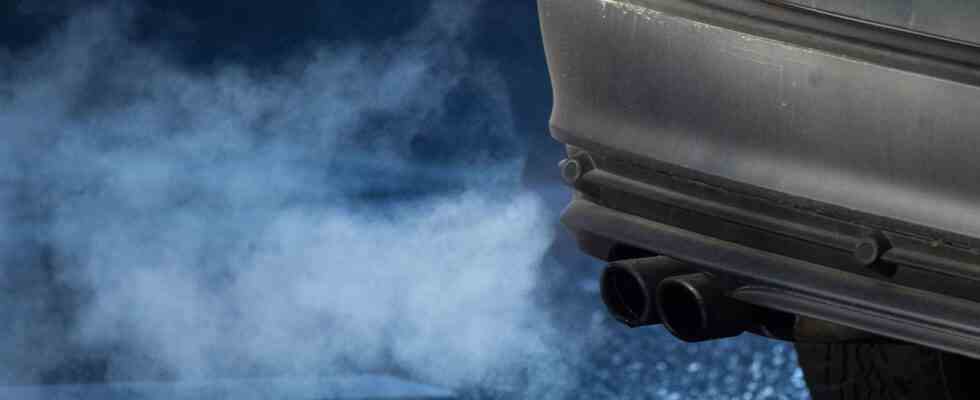FAQ
Status: 28.10.2022 09:08 a.m
From 2035, only zero-emission vehicles will be registered in the EU. What does the decision mean for drivers and what happens to the combustion engines? Answers to the most important questions.
What was decided?
The EU member states and the European Parliament have reached an agreement: From the year 2035, only climate-neutral vehicles should be registered. New petrol and diesel cars that emit greenhouse gases can then no longer be sold.
After the environment ministers had already committed themselves to this in June, a final agreement was reached within the EU yesterday. The negotiators agreed that the so-called fleet limits for cars should drop to zero by 2035. They tell car manufacturers how much CO2 the vehicles they produce are allowed to emit during operation.
Is this really the end for combustion engines?
That’s not entirely clear. The goal of “100 percent emission-free vehicles” by 2035 has now “finally been confirmed,” said French MP Pascal Canfin, who heads the European Parliament’s environment committee. However, the decision will be reviewed again in 2026. The deal also includes a compromise: the EU Commission should check whether the use of so-called e-fuels for cars could be an option in the future. E-fuels are synthetic fuels that are mostly made from water and carbon dioxide. They have similar properties to petrol and diesel – and are therefore a kind of back door for combustion engines.
Politicians seem to disagree on the issue. The Liberal MP Jan-Christoph Oetjen writes: “The European Commission must allow the continued operation of the internal combustion engine with alternative fuels even after 2035.” Greens and environmental organizations, on the other hand, interpret the result differently. Green negotiator Bas Eickhout said the goal of only allowing zero-emission cars would be maintained until the market was fully electric. Greenpeace assumes that e-fuels will only be used in special vehicles such as fire engines or ambulances in the future.
In addition, the Council of Ministers or Parliament must formally agree. Theoretically, such a compromise could also be overturned if governments or parliamentary groups oppose it. However, since the red lines of the negotiation participants are known in advance, there is usually a majority for the compromises – as soon as one is found.
Can I still drive my combustion engine after 2035?
Yes. When the bill comes into force, only the sale of new cars with internal combustion engines would be restricted. Although the fleet limits are about the emission of greenhouse gases while the car is being driven, the zero emissions target would only apply to sellers of new cars.
Can I still buy or sell used cars?
Vehicles that have already been registered are not affected by the project. A general ban on the sale of used cars with internal combustion engines is also not planned. However, the decision could have an impact on its prices. But that depends on many factors. It is also still unclear what the new rules mean for other areas such as the expansion of charging infrastructure or the coverage of filling stations.
Is the next step a driving ban for combustion engines?
This is not to be expected. Plans to completely ban cars with internal combustion engines from the roads have not yet been discussed. It is realistic that a sales ban would automatically make classic petrol and diesel vehicles increasingly rare.
Does the ban only apply to cars?
No, smaller vans are also affected.
Should consumers buy an electric car now?
In order to be prepared for all scenarios in the future, buying an electric car could definitely make sense – also for reasons of climate protection and for more environmentally friendly mobility. For a long time, electric cars were also considered cheaper to run than combustion engines. But that could have changed in the current times of high electricity prices, as a study by the Center Automotive Research (CAR) shows.
However, fuel prices have increased dramatically in recent months. In addition, a serious cost comparison includes many more influencing variables than just the electricity or fuel prices, according to the ADAC. This includes insurance, road tax, expenses for maintenance and repairs, tire wear, fuel/electricity costs and a flat rate for car wash and care. In addition, there are the changes in discounts and government subsidies that have to be taken into account.
What about the charging infrastructure in Germany?
One point of criticism from car manufacturers about the end of combustion engines is that the charging infrastructure for electric cars is not yet sufficient. As of September 1, the Federal Network Agency was notified of almost 70,000 publicly accessible charging points for electric cars in Germany. At the beginning of 2021 there were just under 41,600. The Federal Association of Energy and Water Industries (BDEW) recently assessed the progress in the expansion of charging stations as good. However, the Association of the Automotive Industry has repeatedly had doubts as to whether the expansion is actually progressing quickly enough.

